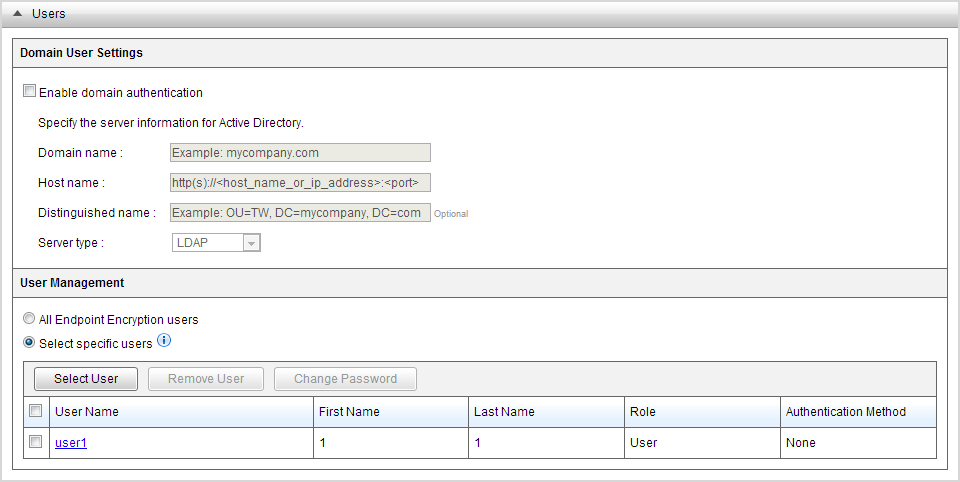|
|
|

ImportantActive Directory (AD) synchronization requires PolicyServer to have three enabled
components:
|
NotePolicy rules only affect existing user accounts. Before configuring
policies, add new users with the Endpoint Encryption Users Widget.
|